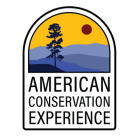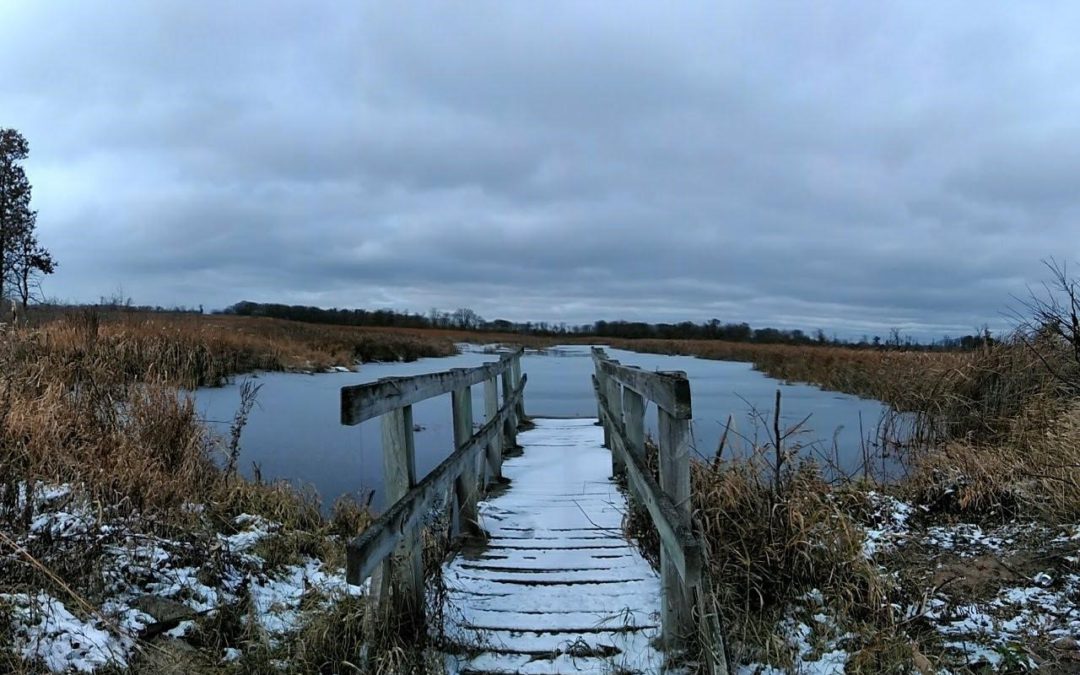Falling Into Winter
By: Angelica Varela and Michelle Ferguson
Hello readers! As the warm fall colors of Oregon waved goodbye, in a blink of an eye we found ourselves at Billy Frank Jr. Nisqually NWR in Washington. We also drove to Sherburne NWR in Minnesota and Kirwin NWR in Kansas where winter was waiting to give us a chilly embrace.
Billy Frank Jr. Nisqually NWR
Billy Frank Jr. Nisqually NWR is a breathtaking refuge in Olympia, Washington, where the big leaf maple tree stands tall, dropping leaves as large as our faces. When we arrived at the refuge near the Puget Sound, fall colors were in full effect, covering the boardwalk trail in hues of red, orange, and yellow — the perfect time to capture the autumn season in one swoop (we both have too many cliche pictures of leaves…but who’s to say what’s too many).
Sampling at this refuge was particularly fun. The visitors we talked to were very kind, enjoying the charismatic wildlife on the refuge such as minks, river otters, and green tree frogs who love to chirp in the rain. During one survey shift at Luhr Boat Launch, we saw what looked to be a dog swimming in the Nisqually River Delta. This was not a far fetched idea considering most visitors here were waterfowl hunting and had dogs to help them retrieve their quarry. We kept staring at this dog-like creature, but it wasn’t until the animal dove back into the water, revealing its spotted body, that we realized it was a harbor seal! Needless to say, we were both super excited to see this unsuspecting visitor.
We were grateful for the staff who welcomed us with open arms and gave us the full refuge experience. Billy Frank Jr. Nisqually was full of hands-on opportunities. We joined two other AmeriCorps interns on an Oregon plant ID walk where we learned about Tall Oregon Grape, Western Red Cedar, and Lady Fern, to name a few. We also helped with the refuge education program, catching invertebrates for a second grade class. Every Wednesday the refuge also hosts an early morning bird walk that we tagged along on. Angelica’s only mission was to see the short eared owl that every visitor told her about during survey shifts. Just as we were about to give up, one of the more experienced birders found the beautiful owl and we got to watch it hunt. Another wildlife highlight! The short eared owl is often seen hunting during the day.

Billy Frank Jr. Nisqually NWR. Michelle sorting invertebrates for an educational program. Photo by Angelica Varela.
Sherburne NWR
Leaving the fall colors in Washington, we drove across the country and arrived to a wintery landscape in Minnesota at Sherburne NWR. Minnesota greeted us with the first snowfall of the season. The snow and below freezing temperatures did not keep native Minnesotans away from the outdoors. Once again the hunters become the hunted; outfitted in blaze orange, armed with our survey iPads and very cute stickers, we made friends with the unsuspecting deer hunters.
In Minnesota we were warmly welcomed and invited to join Sherburne’s volunteer social. With the sky still dark early in the morning we drove behind the refuge’s new Oak Savanna Learning Center to watch sandhill cranes leave their roosts at sunrise. Thousands of cranes find solace in the wetland habitat on the refuge. We were in awe as we listened to their prehistoric calls echo across the sky. On another cool morning, we bundled up, grabbed binoculars and tagged along with the refuge biologist to assist with crane counts. The refuge tracks crane numbers as they migrate to Florida; on the day we assisted, numbers peaked with 11,194 sandhill cranes! Before leaving the wintery midwest we also enjoyed a frosty hike on Sherburne’s 5 mile Blue Hill Trail. Visitors fondly spoke of this hike and we were delighted to experience it for ourselves, especially happy to stumble from oak savanna into the “Enchanted Forest.” Pine trees were planted there to alleviate effects of the dust bowl in the thirties to help establish the soils. We then followed the Snowflake path back down to Kirwin, Kansas to sample more friendly hunters!
Kirwin NWR
A familiar refuge in a new season, we were glad to work with staff at Kirwin NWR again. Similar to Minnesota, Kansas was full swing into hunting season. Visitors here primarily were out hunting pheasants, waterfowl, and deer. The hunters were up early so we were too. The early morning drives to our sampling sites were full of funny critters scurrying along, including deer, a badger, and the occasional skunk. One New York native was excited to learn of our willingness to see a freshly killed pheasant he had shot. We admired the birds’ rainbow plumage as we learned about this hunter’s experience on the refuge. Among pheasants, bucks, and hawks, this time of year Kirwin NWR is also flooded with snow geese. One evening out surveying, the geese made their way over our heads, and the flock was so large it blocked out the sun. Two visitors drove into the refuge that evening simply to watch the peaceful swirling vortex of the geese, an event most visitors called a tornado. Our last day in Kirwin we woke up to a winter wonderland as a blizzard blew through overnight coating the refuge in a fresh blanket of snow.
We said farewell to the snowstorm in Kansas and drove west to warm beachy rays on the California coast. Stay tuned for our final adventures as national visitor survey interns as we wrap up our program with three final refuges!









